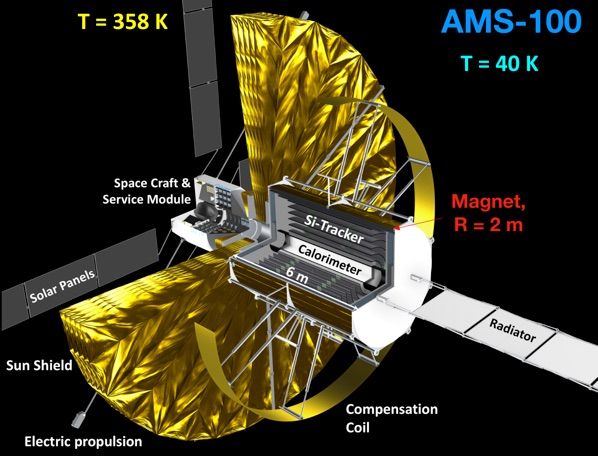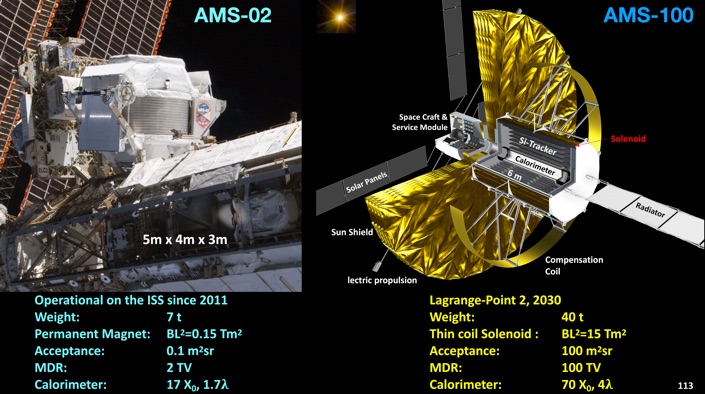A Magnetic Spectrometer with an acceptance of 100 m2 sr (AMS-100) is to be installed on a satellite and operated for 10+ years at Lagrange Point 2 (L2). The purpose of this magnetic spectrometer is to significantly extent the energy reach, geometrical acceptance and sensitivity to cosmic rays and cosmic anti matter of the present AMS-02 experiment on the International Space Station. With a geometrical acceptance of 100 m2 sr, a maximum detectable rigidity of 100 TV and a calorimeter with a depth of 70 radiation lengths and 4 nuclear interaction lengths AMS-100 will provide direct measurements of cosmic ray spectra up to the PeV scale, i.e. up to the cosmic ray knee. Compared to AMS-02 the sensitivity to cosmic anti-matter will be improved by a factor 1000. The energy reach for precision measurements of cosmic ray electrons, positrons and anti-protons will be increased by one order of magnitude compared to AMS-02, up the scale of 10 TeV.
The magnet design is based on new high temperature superconductors to build a large thin coil solenoid with a magnetic field of 1 Tesla to be operated at 50-60 Kelvin. The thin coil of the magnet will also act as a well localized converter for photons allowing in combination with the calorimeter precision measurements of TeV gamma rays with excellent angular and energy resolution with full sky coverage at any moment in time.
Due to the dipole-moment of the large solenoid AMS-100 can not be operated at low earth orbit.






